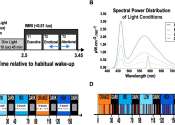Far-UVC light can virtually eliminate airborne virus in an occupied room, study shows
Far-UVC light is a promising new technology for reducing airborne virus levels in occupied indoor spaces, but its effectiveness has not been evaluated in real-life scenarios.
Apr 2, 2024
0
692









